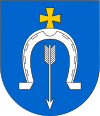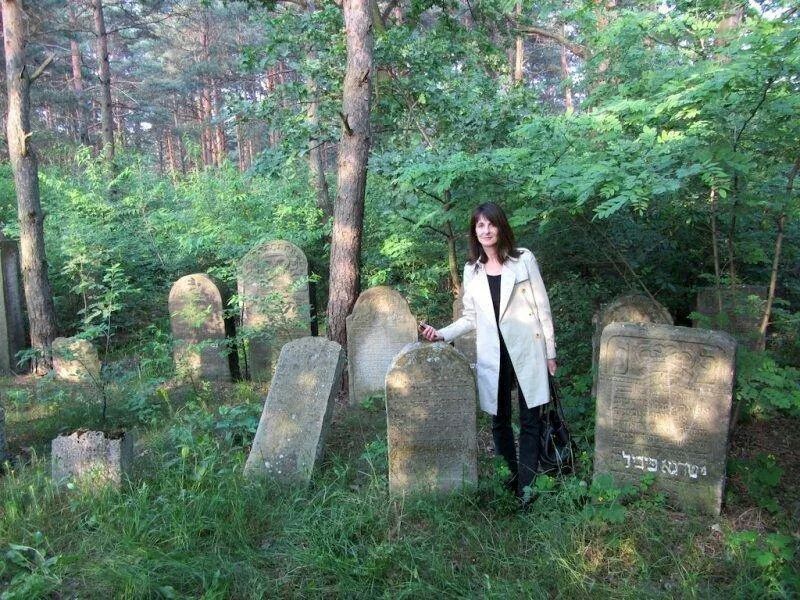 Alternate names: Ulanów [Pol], Ulanov, אולאנוב [Yid], Uleinov. 50°29' N, 22°16' E, 32 miles NNE of Rzeszów (Zheshuv), 6 miles SE of Nisko. Słownik Geograficzny Królestwa Polskiego (1880-1902), XII, pp. 780-781: "Ulanów". Jewish population: 1,947 (in 1880), 861 (in 1921). ShtetLink. JOWBR: Jewish Cemetery. This town in Ulanow gmina, Nisko powiat Subcarpathian Voivodeship with 2009 population of 1,491. The pre-WWII Jewish population was 40%. Beside the town of Ulanów, Gmina Ulanów contains the villages and settlements of Bieliniec, Bieliny, Borki, Bukowina, Dąbrowica, Dąbrówka, Dyjaki, Glinianka, Huta Deręgowska, Koszary, Kurzyna Mała, Kurzyna Średnia, Kurzyna Wielka, Podbuk, Podosiczyna, Ryczki, Wólka Bielińska and Wólka Tanewska. [July 2009]
Alternate names: Ulanów [Pol], Ulanov, אולאנוב [Yid], Uleinov. 50°29' N, 22°16' E, 32 miles NNE of Rzeszów (Zheshuv), 6 miles SE of Nisko. Słownik Geograficzny Królestwa Polskiego (1880-1902), XII, pp. 780-781: "Ulanów". Jewish population: 1,947 (in 1880), 861 (in 1921). ShtetLink. JOWBR: Jewish Cemetery. This town in Ulanow gmina, Nisko powiat Subcarpathian Voivodeship with 2009 population of 1,491. The pre-WWII Jewish population was 40%. Beside the town of Ulanów, Gmina Ulanów contains the villages and settlements of Bieliniec, Bieliny, Borki, Bukowina, Dąbrowica, Dąbrówka, Dyjaki, Glinianka, Huta Deręgowska, Koszary, Kurzyna Mała, Kurzyna Średnia, Kurzyna Wielka, Podbuk, Podosiczyna, Ryczki, Wólka Bielińska and Wólka Tanewska. [July 2009]
Normal 0
Jewish settlement in Ulanow dates from at least 1627 when the synagogue already existed. The independent kahal dates from 1749. For many years, Jews represented about 40% of the population of the city, reaching 56.5% in the 1930s. Most died at Treblinka. [July 2009]
CEMETERY: A fenced 1-hectare cemetery was established in 1700 near the Catholic cemetery. Around 200 gravestones survived the Nazi destruction with the oldest from 1825. After liberation, the cemetery fell into oblivion. In the 1980s, local priest Joseph Lizaka, arranged restoration of the cemetery and built the fence. The gate has a sign that reads: "Jewish Cemetery in Ulanowie founded around 1700 is the largest in the region. The cemetery has 150 matzevot, most from the 19th century. Landmarked in 1984. Renovated through the efforts of Ulanów Municipality." Jack Proszyka, historian and researcher of Polish Jewry, cataloged surviving tombstones. Recently, further renovation was anticipated. The cemetery was in extremely bad condition. 150 matzevot are crumbling. The long iron fence surrounding the cemetery collapsed where someone made an illegal dump. The city had long asked the Jewish communities for help and money to renovate the cemetery. The reconstruction of the cemetery came as the result of its being landmarked and money from the European Union. They only awaited the consent of a Jewish community to continue. Photos. [July 2009]
MASS GRAVE: In autumn 1942, during the deportation of Jews from Ulanów, about 70 were shot at the cemetery and buried. [July 2009]US Commission No. POCE000095
Ulanow is located in Tarnobrzeg at 50º29 22º16, 50km from Tarnobrzeg. The cemetery is located at ul. Cmentarna (lot no. 620 on E outskirts of town). Present population is 1,000- 5,000 with no Jews.
- Town: Urzad Gminy Ulanow, 3-90 Maja 19, tel. 6,76,41
- Regional: Wojewodzki Konserwator Zabytkow, (mgr. Dominik Komada) of Tarnobrzeg, ul. Pilsudskiego 40, tel. 22-81-61 and Dyrektor Wydzialu Spraw Spolecznych, UrzadoWojewodzkiego, (Edward Kuracinski), Tarnobrzeg, ul. Kosciuszki 32, tel. 22-19-99.
The earliest known Jewish community was 18th century. 1921 Jewish population was 861.The Orthodox Jewish cemetery was established in the 7100s with last known Jewish burial 1940. Landmark: Register of Monuments no. 287/A. The suburban flat land about 350 meters from the Catholic cemetery has a plaque in Polish and in Hebrew that mentions Jews. A continuous fence with locking gate surrounds. Reached by turning directly off a public road, access is open to all. The size of cemetery before WWII and now is 1.50 hectares. 100-500 gravestones in original locations with between 1-20 stones not and less than 25% toppled or broken date from 1881-20th century. The sandstone and some concrete flat stones with carved relief decoration have Hebrew inscriptions. One gravestone is engraved with a bas-relief portrait that has traces of paint on its surface. There are no known mass graves or structures. Municipality owns site used for Jewish cemetery. Properties adjacent are recreational, commercial and industrial, agricultural, and residential. The cemetery boundaries remain the same since 1939. Occasionally, organized individual tours and private visitors stop. The cemetery was never vandalized. In 1985-1986, the commune authority, by order of the Voivodship Conservator of Monuments, re-erected stones, patched broken stones, cleared vegetation, and fixed the wall and gate. Occasional clearing and cleaning by local and regional authorities is care. Security, vegetation and development pose only slight threats.
Marek Florek of Rudnik, ul. Chopina 12/2, tel. 26 completed survey on 18/10/1991, using the documentation card. Scientific conservation documentation is currently being prepared. Marek Florek visited the site on 01/10/1991.
The cemetery was cleared of brush many months ago, when Jacek began the project (his illness put off project for six months). The cemetery is fenced and gated in the 1980's by the priest who is still there. Jacek is going back in the summer of 1999 to do some restoration to more tombstones (overturned and fragmented ones). Source: Melody Katz; This email address is being protected from spambots. You need JavaScript enabled to view it. [date?]
Photo courtesy This email address is being protected from spambots. You need JavaScript enabled to view it. [2014]

